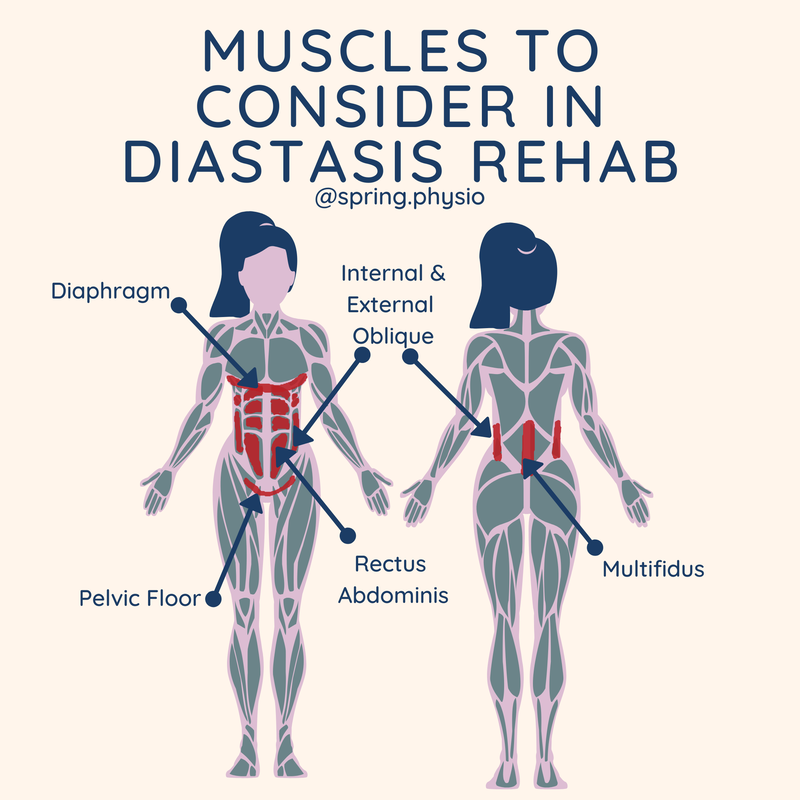|
Diastasis is a whole body issue. So much focus can be placed on TVA that the rest of the core cylinder can be forgotten. Our core is not designed to work as individual muscles, but as a "cylinder" of support comprising of the diaphragm, TVA (deep abdominals, pelvic floor and mulitifidus (deep spinal muscles). When we re rehab a diastasis, the whole core has to be involved.
If any non-core muscle is restricting any element of the cylinder, it is also going to have an affect on the deep abdominals. For example, if your obliques are tight and your diaphragm is not moving freely as you breathe, one element of the core cylinder is restricted. When you try and do your core exercises, the lack of diaphragm engagement is going to make the whole core less well engaged, reducing the effectiveness of the core exercise to heal the diastasis. So if you've tried a load of core exercises/pilates and you haven't seen the results your looking for, consider seeing your local woman's health physio for a thorough assessment.
0 Comments
This acronym was developed by Grainne Donnelly, as a proforma for assessing and managing diastasis. The acronym covers the key areas of assessment:
1.Person - understanding who you are treating and their personal journey 2.Posture 3.Patterns (of movement - eg. abdominal bracing) 4.Respiration- (is breathing optimal for core recovery?) 5.Ribcage (assess compensatory strategies, flaring, asymmetry, infrasternal angle) 6.Load (assessing the abdominal wall with different types of load) 7.Defect (Are there any other defects? eg hernia) Assessing each of these areas will help you identify factors that could be contributing to an ongoing diastasis. Addressing any compensatory strategies, suboptimal breathing, altered movement patterns and postural changes will ensure your rehab is bespoke and address the function of the abdominal wall, not just the gap. This is such a great road map for how to approach diastasis holistically and FUNCTIONALLY. If you treat diastasis go read it!!! You can read the full article here: "Donnelly G. (2019) Diastasis rectus abdominis: physiotherapy management. Journal of Pelvic, Obstetric and Gynaecological Physiotherapy 124 (Spring), 15–19. |
AuthorClaire is a women's health and sports Physiotherapist. She is the owner of Spring Physio and is based in East Sussex. Archives
April 2024
Categories
All
|



 RSS Feed
RSS Feed